Turning Clinical Research into Venture-Backable Products
Translating clinical trials, studies, or lab research into a scalable, investor-ready product requires more than good science. This guide presents a repeatable checklist — covering scientific validity, clinical significance, market size, regulatory pathway, IP, unit economics, go-to-market strategy, team fit, and de-risking milestones — plus a commercialization canvas, investor slide outline, and a short action plan to move from evidence to enterprise.

Below is a pragmatic framework you can apply to any clinical trial result, experimental finding, or research insight to evaluate commercial potential and build a venture pathway.
1) Scientific signal first — is the finding real and meaningful?
-
Replicability: Has the result been reproduced (internally or externally)? Single small trials are weak signals.
-
Effect size & clinical significance: Is the measured benefit meaningful to patients/clinicians (not just statistically significant)?
-
Population & generalizability: Does the effect apply to a sufficiently large and relevant patient population?
-
Safety profile: Any safety concerns, adverse events, or contraindications that could block adoption or raise costs?
Red flags: one-off small p-value, unclear endpoints, subgroup-only effects, major safety signals.
2) Unmet need & value proposition — why will anyone pay or adopt it?
-
Unmet clinical need: Does it solve a high-pain problem (mortality, morbidity, cost, workflow inefficiency)?
-
Value to buyer/stakeholder: Who benefits — patients, hospitals, payers, employers, providers? What problem is eliminated or cost saved?
-
Differentiation vs. standard of care: Is it better/cheaper/faster/easier than existing options? Is the differentiation defensible?
-
Willingness to pay & reimbursement: Is there a clear path to insurance reimbursement or an accepted out-of-pocket market?
3) Market economics — is the addressable market attractive?
-
TAM / SAM / SOM: Estimate Total Addressable Market, Serviceable Addressable Market, and Serviceable Obtainable Market.
-
Unit economics: Per-patient revenue, gross margin, cost of goods sold (COGS), lifetime value (LTV) vs. customer acquisition cost (CAC).
-
Pricing & reimbursement dynamics: Reimbursement codes, DRG impacts, payer policies, existing coverage decisions.
-
Competitive landscape: Direct/indirect competitors, substitutes, and potential future entrants.
4) Technical & operational feasibility — can it scale?
-
Manufacturing or tech maturity: For devices: ability to manufacture at scale. For drugs: formulation / CMC scaling. For software: integration and interoperability.
-
Supply chain and distribution: Devices need suppliers and logistics; services need partnerships with clinics/hospitals.
-
Regulatory pathway: Class II vs Class III device? 510(k) vs PMA? CE mark? FDA de novo? For drugs: IND/Phase strategy. For software: SaMD classification, clinical validation needs. Regulatory dictates time and cost.
-
Intellectual property: Freedom-to-operate, patentability, trade secrets, or regulatory exclusivities (e.g., orphan drug status).
5) De-risking roadmap — how to convert science into investable milestones
Investors buy de-risked progress. Translate scientific claims into discrete, investor-friendly milestones:
-
Reproducibility / confirmatory study: Independent validation or larger pilot (n and endpoints defined).
-
Prototype / MVP: Working device or software integrated into a clinical workflow.
-
Clinical pilot & KOL endorsement: Small real-world pilot with clinical champions and user feedback.
-
Regulatory classification & pre-submission: Early meetings with regulators (e.g., FDA pre-sub) or notified bodies.
-
Reimbursement & health-economics evidence: Cost-effectiveness or budget impact model.
-
Manufacturing & supply chain setup: Pilot manufacturing run and quality system (ISO 13485 for devices).
-
Commercial traction: Letters of intent (LOIs), pilot contracts, distribution agreements.
6) Team & execution — do the founders and advisors have the right mix?
-
Scientific founder(s): domain expertise and credibility.
-
Technical builder(s): product/engineering / manufacturing experience.
-
Commercial lead: sales, payer or provider relationships.
-
Regulatory & quality: someone with hands-on experience getting similar products approved.
-
Advisors / KOLs: clinical champions who will help design trials and open doors.
Investors prefer small, complementary teams with evidence of execution in regulated healthcare.
7) Business model & go-to-market (GTM)
-
B2B (hospital/health system) vs B2C (patient) vs B2P (payer): Each needs a different GTM plan.
-
Sales motions: Enterprise sales cycles (long; require pilots/KOLs) vs self-serve digital models (shorter cycles).
-
Channels & partnerships: Distributors, health systems, pharmacy chains, or digital platforms.
-
Adoption strategy: Clinical champions, peer-review publications, guideline inclusion, reimbursement pathways.
8) Funding readiness & investor fit
-
Stage-appropriate asks: Seed funds for pilots and engineering; Series A for pivotal trials/regulatory; later rounds for scaling and commercialization.
-
Investor profile: Deep-tech life-science VCs, health-system strategic investors, corporate partners, or impact investors (for global health).
-
Use of funds: Be specific: clinical study, regulatory, manufacturing, hiring, sales pilots.
-
Milestones to next round: Show the exact evidence that will materially reduce risk.
9) Exit pathways — how investors will realize returns
-
Acquisition: Big medtech, pharma, or digital health acquirers seeking pipelines or tech.
-
Partnerships / licensing: Non-dilutive deals with incumbents.
-
IPO: Rare for early-stage medtech/biotech; requires deep clinical validation and revenue scale.
Practical tools you can use now
Decision checklist (quick)
-
Result replicated or strong plan to replicate within 6–12 months
-
Effect size = clinically meaningful and targetable population ≥ reasonable SAM
-
Clear IP or defensible trade secret / regulatory exclusivity potential
-
Regulatory pathway identified with estimated time & cost
-
Plausible unit economics & reimbursement path or direct-pay market
-
Pilot site(s) and KOLs ready to champion trial/pilot
-
Founding team covers science, product, commercial and regulatory roles
-
De-risking milestone plan with 3–5 investor milestones
Commercialization Canvas (one page)
-
Problem & Evidence (one sentence)
-
Target patient / customer & SAM
-
Value proposition & primary outcome metric
-
Regulatory classification & key requirements
-
IP & freedom-to-operate status
-
Prototype / MVP status
-
Pilot plan & clinical endpoints
-
Business model & pricing
-
Key risks & mitigations
-
12–18 month milestones + budget needed
Investor deck outline (10–12 slides)
-
Title / Vision
-
Problem & clinical evidence (what the research shows)
-
Solution / product & technology maturity
-
Clinical data summary (effect size, endpoints, safety)
-
Market opportunity (TAM/SAM/SOM)
-
Competitive landscape & differentiation
-
Regulatory & IP strategy
-
Business model & pricing / reimbursement plan
-
Go-to-market plan & partnerships
-
Team & advisors
-
Financials & use of funds (next 12–18 months)
-
Ask / milestones
Example 3-month action plan (high level)
Month 1 — Validate & Plan
-
Run a reproducibility check or secondary analysis of existing data.
-
Do a 1-page commercialization canvas and initial TAM calculation.
-
Talk to 3–5 KOLs and 2 potential pilot sites for feedback.
-
Map regulatory pathway and estimate costs/time.
Month 2 — Prototype & Regulatory Prep
-
Build/refine MVP or prototype for clinical pilot.
-
Prepare protocol for an early feasibility/pilot study.
-
Start IP landscape search (freedom-to-operate); file provisional if appropriate.
-
Begin early payer conversations or health-economics model.
Month 3 — Pilot & Fundraising Prep
-
Launch a small pilot (n depending on device/drug/software).
-
Gather initial usability and safety data.
-
Prepare investor materials (deck + one-pager) and target investor list.
-
Define next funding ask with specific milestones and budget.
Common mistakes to avoid
-
Commercializing solely because the science is “cool” without a clear buyer.
-
Ignoring regulatory time & cost implications.
-
Underestimating adoption friction in clinical workflows.
-
Over-relying on publications as proof of commercial viability — investors want reproducible, scalable evidence and traction.
Final pragmatic rubric (score each 1–5)
Rate the finding on:
-
Scientific robustness
-
Clinical significance
-
Market attractiveness
-
Regulatory feasibility
-
IP defensibility
-
Team readiness
-
Unit economics / reimbursement
-
Execution plan & milestones
Total score out of 40 — use thresholds (e.g., ≥30 = strong candidate; 20–29 = pursue with de-risking; <20 = rethink).
What's Your Reaction?
 Like
0
Like
0
 Dislike
0
Dislike
0
 Love
0
Love
0
 Funny
0
Funny
0
 Angry
0
Angry
0
 Sad
0
Sad
0
 Wow
0
Wow
0



















































































